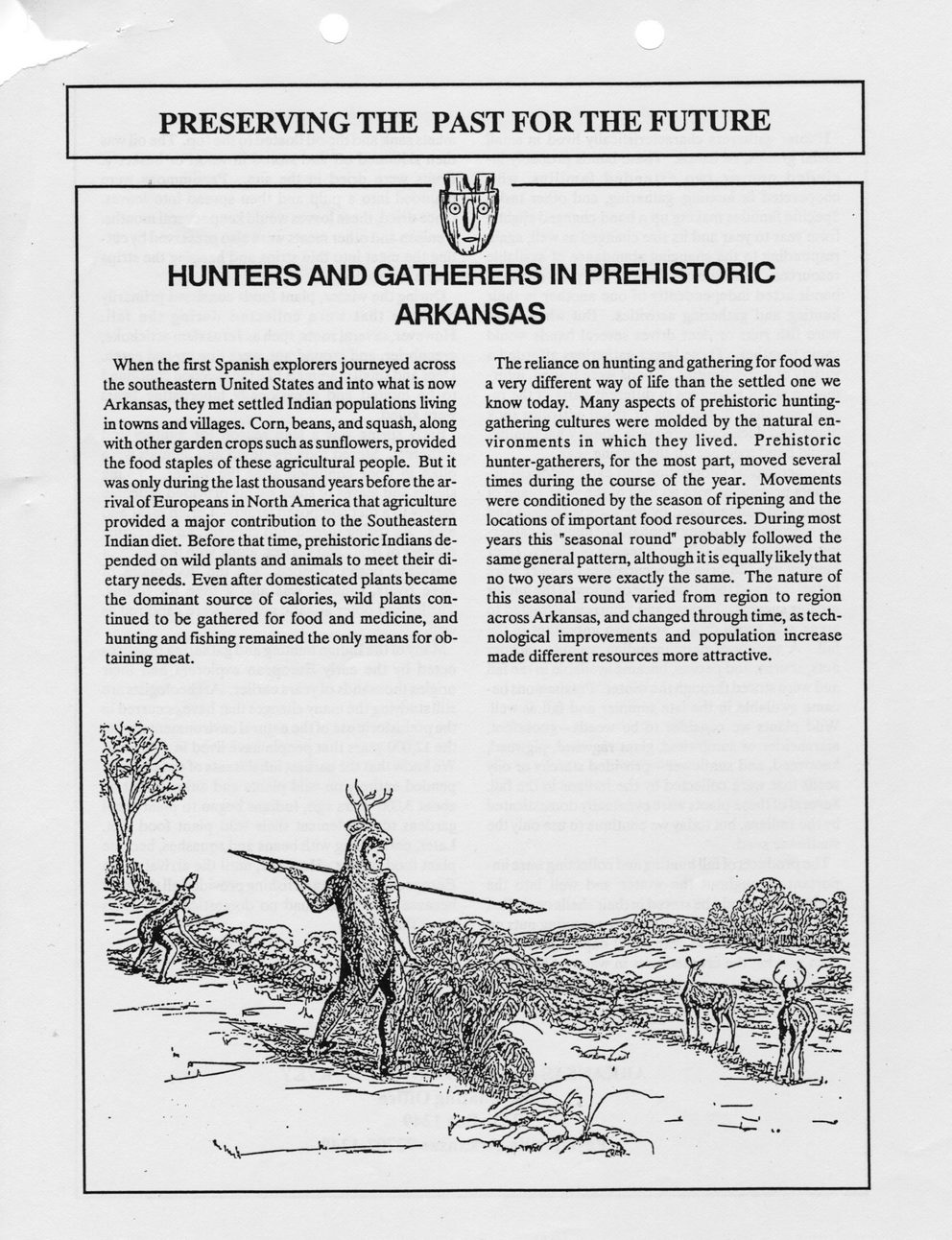This text was obtained via automated optical character recognition.
It has not been edited and may therefore contain several errors.
PRESERVING THE PAST FOR THE FUTURE HUNTERS AND GATHERERS IN PREHISTORIC ARKANSAS When the first Spanish explorers journeyed across the southeastern United States and into what is now Arkansas, they met settled Indian populations living in towns and villages. Corn, beans, and squash, along with other garden crops such as sunflowers, provided the food staples of these agricultural people. But it was only during the last thousand years before the arrival of Europeans in North America that agriculture provided a major contribution to the Southeastern Indian diet. Before that time, prehistoric Indians depended on wild plants and animals to meet their dietary needs. Even after domesticated plants became the dominant source of calories, wild plants continued to be gathered for food and medicine, and hunting and fishing remained the only means for obtaining meat. The reliance on hunting and gathering for food was a very different way of life than the settled one we know today. Many aspects of prehistoric hunting-gathering cultures were molded by the natural environments in which they lived. Prehistoric hunter-gatherers, for the most part, moved several times during the course of the year. Movements were conditioned by the season of ripening and the locations of important food resources. During most years this "seasonal round" probably followed the same general pattern, although it is equally likely that no two years were exactly the same. The nature of this seasonal round varied from region to region across Arkansas, and changed through time, as technological improvements and population increase made different resources more attractive.

Native Americans AAS-Hunters-and-Gatherers-in-Prehistoric-Arkansas-(1)